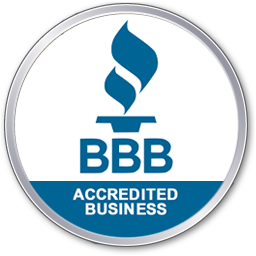Key Takeaways
- Water damage can be separated into categories and classes based on severity. Categories dictate the water’s contamination level, while classes signify how deep and destructive the damage is.
- Category 1 water damage involves sanitary, clean-looking water, category 2 includes notably contaminated gray water, and category 3 contains extremely contaminated black water.
- Class 1 water damage is the least severe, class 2 signifies a fast evaporation rate, class 3 suggests the quickest evaporation rate, and class 4 requires specialty drying solutions.
- Regardless of category or class, water damage should be cleaned up immediately to avoid further issues like mold growth—trained environmental remediation teams like Alpha Environmental can restore your property.
Understanding the Different Classifications of Water Damage
Water damage can occur from various sources, including leaky pipes, floods, or broken sprinkler systems. Different types of water damage can be grouped into categories and classes based on severity. Categories are intended to label the water’s contamination level, and classes are used to explain how extensive the damage is, giving people an idea of how labor-intensive restoration may be.
Water damage can encourage mold growth and consequent health problems if left untreated. Heavily saturated building materials can also cause structural issues throughout your property. It is best to hire a professional environmental consultant and remediation team like Alpha Environmental to perform your water damage restoration safely and effectively.
How Contamination Occurs Before Water Damage
Some forms of water damage are caused by natural sources, like flood waters, while others come from malfunctioning distribution systems, like broken plumbing parts. Both natural and controlled water supplies can get contaminated in various ways.
How Natural Forces Cause Contaminated Water Damage
During floods and storms, natural water supplies can sweep up contaminants before causing water damage to your property. Some common examples of pollutants are:
- Chemicals like fertilizers or pesticides from nearby land
- Organic matter like decomposing wildlife or excrement
- Sewer runoff or litter
- Rocks and soil with arsenic, radon, or uranium
How Distribution Problems Lead to Contaminated Water Damage
Most buildings feature a complex piping system connecting sinks, sprinklers, and other outlets to a water distribution facility. With a maze of pipes woven through your property and nearby land, there is a potential for contamination and breakage.
Water from distribution centers can get contaminated if there are:
- Improper manufacturing operations
- Cracks in water pipes that allow foreign substances to breach the supply
- Building materials that mix with leaking water
If your building’s water damage features high levels of contamination, it can pose more significant risks to your health, complicate water removal, and lead to higher water damage restoration costs.
Categories of Water Damage
Most environmental remediation companies categorize water damage based on how contaminated the water is. Most forms of water damage fall under one of the following three categories.
Category 1 Water Damage
Category 1 water damage is caused by relatively clean water from a sanitary source. The United States Geological Survey labels this safe type of water as unharmful if you come into contact with it.
Although clean water does not pose a significant risk when people touch or ingest it, it can still damage your home when its supply system is defective. Examples of clean water sources that can cause water damage are:
- Fresh water supply lines
- Pure rainwater
- Unsullied snow or ice that has melted
- Clean toilet tanks without contaminants
- Clean standpipe systems
If any of these clean water sources find their way into your home through holes, cracks, or fissures, they can saturate building materials, causing water damage.
Category 2 Water Damage
Category 2 water damage is fueled by gray water. The Water Education Foundation defines gray water as leftover, untreated water from domestic, commercial, or industrial applications. Considering this type of water was previously used, it can contain chemicals and harmful bacteria.
Calamities with the following gray water sources can trigger water damage:
- Washing machines
- Sinks
- Bathtubs
- Toilet bowls with urine
- Aquariums
- Water beds
If old or sitting water from these sources becomes unrestrained, it can seep into other components of your house and cause severe water damage. Since gray water can be harmful to touch or ingest, people should avoid exposure to category 2 water damage.
Category 3 Water Damage
Category 3 water damage is incited by black water, which is grossly contaminated. Black water can contain pathogens, toxins, and other harmful agents.
Catastrophes with the following black water sources can lead to water damage:
- Seawater
- Waste lines
- Rivers and streams
- Hurricanes or tropical storms
- Toilet bowls with feces
Sometimes, sewage backups can also cause category 3 water damage. In such cases, a professional team may need to perform sewage cleanup services before addressing the residual water damage.
Avoid exposure to category 3 water damage to minimize the risk of contracting a disease. Regardless of the categorical level, you should always contact a trusted environmental professional to restore water damage.
Trust The Professionals for a Thorough Water Damage Restoration
Water damage restoration is a complex process, and it requires an expert company to do it right. Alpha Environmental provides peace of mind with our expertise.
Classes of Water Damage
In addition to sorting water damage categorically, it is also separated into different classes based on the extent of the damage. Higher water damage classes usually require more expensive and complicated restoration processes, which may take more time and money.
Class 1
Class 1 water damage is the least destructive. Usually, materials absorb the least amount of water from this class of water damage. Therefore, restoration for class 1 water damage is relatively easy and non-intrusive.
Class 2
Class 2 water damage features a fast rate of evaporation. This class of water damage often affects absorbent components like carpets, cushions, and walls. Class 2 water damage is more difficult to repair than class 1.
Class 3
Class 3 water damage exhibits the quickest rate of evaporation. This class of water damage usually originates from overhead sources like broken sprinkler systems. Class 3 water damage usually leads to the saturation of walls and furniture, requiring more work to repair than class 2.
Class 4
Class 4 water damage is the most destructive and demands special water restoration and removal procedures, like complex systems of heaters, fans, and dehumidifiers. This form of water damage frequently affects hardwood floors, concrete foundations, and plaster.
It’s important to be able to recognize signs of water damage, such as musty odors, stains on walls, and peeling paint, to catch the problem before it grows and progresses classes.
Effects of water damage
Water damage can jeopardize buildings’ structural integrity and the health of their occupants. Bacteria, mold, and wood-decay fungi thrive in moist environments like the ones created by water damage.
With the moisture from water damage aiding their reproduction, xylophagous fungi can cause wood decay throughout your house. As your building materials weaken, your property can become less sturdy, raising the risk of cave-ins.
Like xylophagous fungi, harmful bacteria and mold spores can also germinate in the high moisture levels near water damage. Mold exposure can incite fever-like symptoms, including:
- Respiratory issues
- Headaches
- Dizziness
- Nausea
- Fatigue
Still, untrained individuals should avoid attempting DIY mold removal to avoid raising their risk of contracting health problems or damaging their property. Instead, they should use professional services from trusted environmental remediation companies like Alpha Environmental to ensure safety and efficiency.
How Alpha Environmental Can Help
Water damage can take many forms and come from natural forces or distribution malfunctions. Understanding the different categories and classes of water damage can help you gauge how expensive and labor-intensive restoration will be.
Water damage categories evaluate the water’s contamination level, ranging from clean to black water. Classes are used to assess the extent of the water damage, giving insight into what building components were damaged, such as carpets, walls, or concrete foundations.
It is best to schedule a professional inspection with a trusted team of environmental consultants and remediators like Alpha Environmental. We have been performing water damage restoration and mold services for Portland, Oregon, and the surrounding area for over 21 years. Our unmatched expertise allows us to assess damages and make repairs quickly, efficiently, and economically.
Contact Alpha Environmental today for a thorough water damage inspection, restoration process, and other necessary remediation services.




